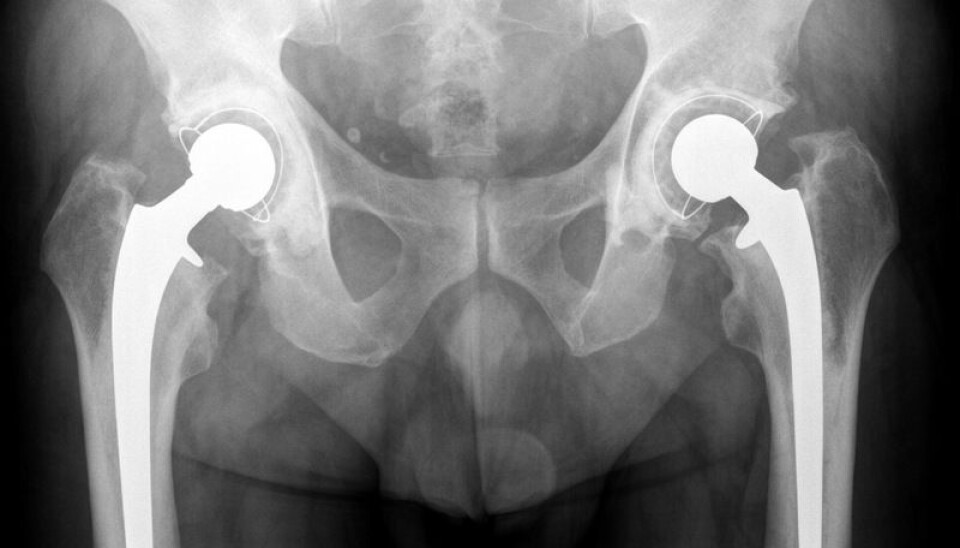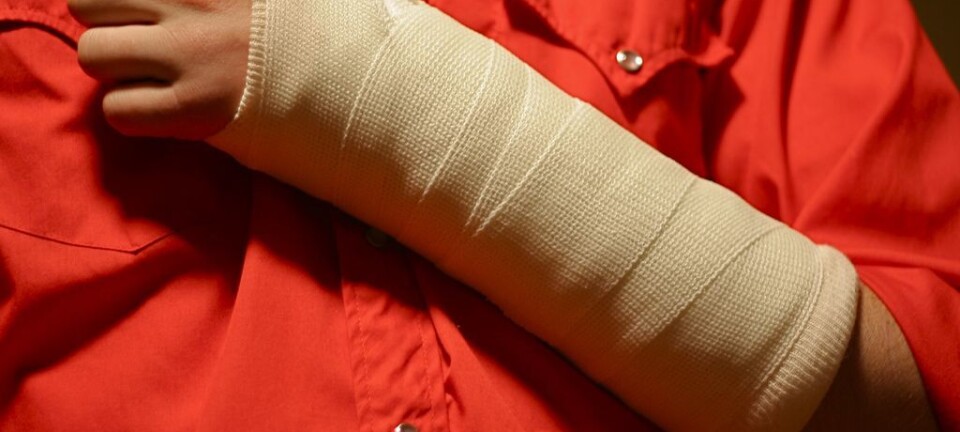
Patients wear down their artificial hips
Implanted hip prostheses often need to be replaced after only 15-20 years because the metal they are made of wears down and causes pain. A new research project aims to find new ways of improving artificial hips.
Pain, osteoarthritis and difficulty in movement are common reasons why especially middle-aged and elderly people need to undergo hip replacement surgery. Shortly after the surgery, the patients are usually able to move normally, almost without pain.
Unfortunately, however, there is a great risk that their legs will not continue to be painless for the rest of their lives. In many cases, the hips start to hurt again after a few years because their implanted prostheses are worn out.
”Hip implants typically last for 15-20 years, and then they need to be replaced. Rather a lot of revision surgeries are being performed these days,” says Morten Stendahl Jellesen, a senior researcher at the Department of Mechanical Engineering, the Technical University of Denmark (DTU).
”People died at an earlier age in the old days, so if you were 65-70 years old when you had a hip replacement, you usually didn’t live long enough to wear out your artificial hip. Elderly people back then also didn’t move as much as today’s elderly do. Today they play golf, they bike and take long walks all the way into old age, and that wears out the hip implants more quickly.”
People react differently to the surgery
We will be looking for the exact mechanisms that cause some people to feel pain 15-20 years after their hip replacement surgery, while others with artificial hips don’t feel anything.
Morten Stendahl Jellesen
Jellesen and his DTU colleagues will be taking a closer at why hip prostheses often cause pain and other inconveniences after 15-20 years. The aim is to find new materials that last longer and are safer than the existing ones.
The researchers know that there are great differences in how people react to hip replacement surgery.
“We will be looking for the exact mechanisms that cause some people to feel pain 15-20 years after their hip replacement surgery, while others with artificial hips don’t feel anything,” says the researcher.
Ions and particles destroy tissue
Artificial hips are made of metal which gradually starts to release ions into the surrounding tissue.
In the tissue we can see if ions have been released from the metal or if particles have been released from the plastic that sits between the implanted metal hip socket and the metal hip bone.
Morten Stendahl Jellesen
This occurs because the uppermost metal bone on the artificial hip rubs against the hip socket when a person walks. The hip socket is usually lined with plastic, which means that both microscopic metal ions and plastic particles can wear off and leak into the bloodstream.
The ions and the particles are believed to be able to damage the soft tissue surrounding the hip. It is also thought that they may degrade the bones as well as cause pain and general health problems. It may therefore be necessary to replace the worn-down part of the implant.
Metal implants may cause allergies
By examining the tissue from people who have had artificial hips for a number of years, the researchers hope to solve the mystery of why many people with prostheses experience pain and complications.
”We’ll be taking samples of tissue that is extracted when these patients undergo revision surgery. In the tissue we can see if ions have been released from the metal or if particles have been released from the plastic that sits between the implanted metal hip socket and the metal hip bone.”
Some people’s tissue is more sensitive
Artificial hips are made from cobalt, chromium and nickel, which may cause allergic reactions in some people.
It’s also possible that an immune reaction occurs when the metal wears down and starts to release ions into the tissue.
”To find out how we can make better implants, we first need to describe the biological environment that the implant enters into. What happens to the tissue when an implant is inserted? And why do some people have more sensitive tissue than others?”
Simulating the wear process
The research team is also planning to figure out how many ions the various types of metal release when they wear down. They aim to do this with a special instrument that measures what goes on when metal rubs against another material.
”We can simulate the wear process,” says Jellesen. “By testing it in a special liquid that resembles the tissue in our bodies, we can measure how many ions the various types of metal release when it wears down.”
The plan is to arrive at an alloy composition that’s better than the materials currently used in artificial hips.
The team will for instance be taking a closer at stainless steel and titanium as potential replacements for metal.
------------------------
Read the Danish version of this article at videnskab.dk
Translated by: Dann Vinther







